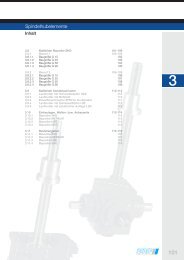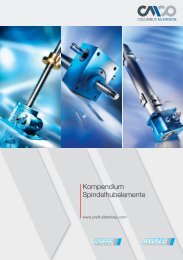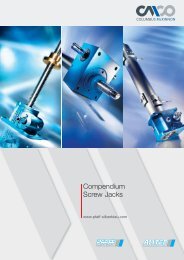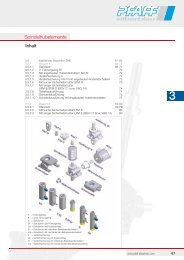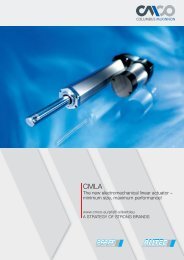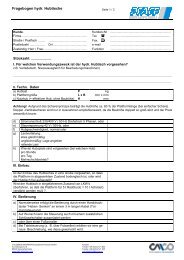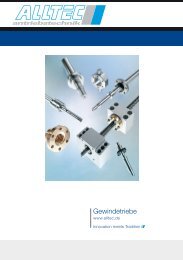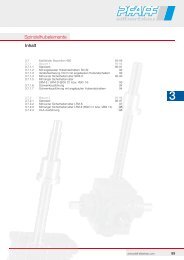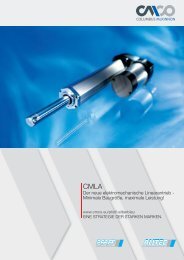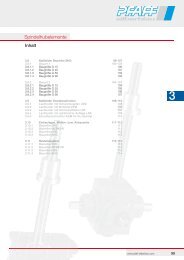Elektroseilwinde Electric Wire Rope Winch SW-E ... - Pfaff-silberblau
Elektroseilwinde Electric Wire Rope Winch SW-E ... - Pfaff-silberblau
Elektroseilwinde Electric Wire Rope Winch SW-E ... - Pfaff-silberblau
You also want an ePaper? Increase the reach of your titles
YUMPU automatically turns print PDFs into web optimized ePapers that Google loves.
English<br />
<strong>Electric</strong> wire rope winch BETA II 04.01.401<br />
Before taking into operation, please carefully read this operating instruction.<br />
Observe the safety instruction!<br />
File documentation!<br />
1 Prevention of accidents<br />
1.1 Destined use<br />
The electric wire rope winch >BETA< is a power operated winch fixed to a console for lifting<br />
and lowering of loads.<br />
Not suitable for use in explosive danger area.<br />
Not suitable for use in corrosive atmosphere.<br />
Alterations to the winch or fitting of accessories are only allowed with our written approval.<br />
Pay attention to the technical data and functional description!<br />
1.2 Regulations for the prevention of accidents<br />
Observe any rules which are valid for the respective country. 1)<br />
Presently valid in Germany:<br />
EC directive 2006/42/EC<br />
BGV D8 winches- lifting and pulling devices<br />
BGV D6 crane<br />
BGR 500 chapter 2.8 Suspension devices in hoist operation<br />
EN 13155 Non-fixed load lifting attachments (German version)<br />
EN 14492-1; EN 14492-2 Power driven hoists<br />
DIN 15020 page 1 and page 2<br />
EN 60204 T1 <strong>Electric</strong>al equipment of machines<br />
EN 60204 T32 <strong>Electric</strong>al equipment of machines-hoists (VDE 0100 T726)<br />
FEM 9.661, ISO 4308/1, ISO 4301/1<br />
FEM 9.775, FEM 9.511<br />
1) in the respective version<br />
1.3 Safety instructions<br />
Operation, installation and maintenance work should only be executed by:<br />
Competent, qualified persons<br />
(definition of experts acc. to IEC 364)<br />
Qualified persons for reasons of their training, experience and instruction are persons who do their necessary<br />
activities without danger and who can avoid this danger due to their knowledge of directives, regulations for the<br />
prevention of accidents and standards. These persons are responsible for the security of the installation.<br />
Moving of people by the winch or staying in danger zone is forbidden.<br />
Moving of loads over people is strictly forbidden.<br />
Never touch moving parts.<br />
Defects must be repaired immediately by competent trained personnel.<br />
1.3.1 The load<br />
� must not be left suspended without supervision,<br />
� must not be allowed to swing<br />
� must not fall into the wire rope<br />
� must not be operated in areas which cannot be overlooked. It must be possible to overlook the entire<br />
lifting area.<br />
1.3.2 The rope<br />
� should only be used for lifting, lowering or pulling of various loads and must not be used for<br />
any other purpose<br />
� when filled to its capacity the drum flanges must project not less than 1.5-times the diameter<br />
of the rope<br />
� examine and service regularly acc. to DIN 15020 page 2<br />
� in lowest position at least 3 full turns of rope should remain on the drum when loaded<br />
� fleet angle (see picture)<br />
� � for standard wire rope �3°, � for special rope �1,5°<br />
� do not touch the rope inlet<br />
� only handle with safety gloves<br />
� slowly position the slack rope to the load<br />
technische Änderungen vorbehalten design changes under reserve changements techniques sous réserve 22<br />
�3°<br />
�3°<br />
�1,5° �1,5°<br />
3. 2. 1.




